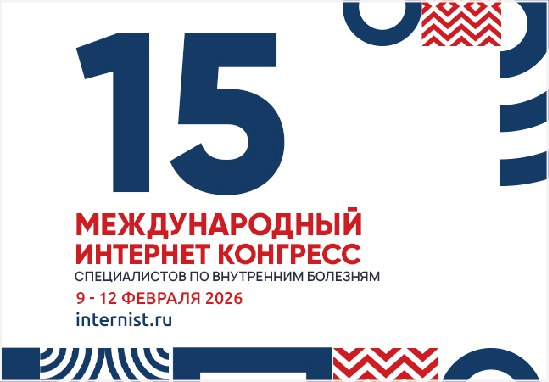КАРДИОСТИМУЛЯЦИЯ И НАРУШЕНИЯ РИТМА У ПАЦИЕНТОВ С ХРОНИЧЕСКОЙ СЕРДЕЧНОЙ НЕДОСТАТОЧНОСТЬЮ
https://doi.org/10.15829/1728-8800-2015-3-89-94
Аннотация
Хроническая сердечная недостаточность (ХСН) сопровождает многие сердечно-сосудистые заболевания. У пациентов с ХСН часто наблюдаются предсердные и желудочковые нарушения ритма. В последнее время возрос интерес к фибрилляции предсердий (ФП), в связи с ее влиянием на прогноз у пациентов с ХСН, сочетание ХСН и ФП обладает худшим прогнозом по сравнению с изолированной ФП или ХСН. Этим пациентам необходим контроль частоты желудочковых сокращений с помощью постоянной правожелу- дочковой стимуляции. Однако постоянная правожелудочковая стимуляция приводит к ухудшению функции левого желудочка через сложные механизмы нарушения синхронии в работе сердца. При возникновении диссинхронии с прогрессированием ХСН этим пациентам необходимо применение сердечной ресинхронизирующей терапии. Желудочковые нарушения ритма также часто встречаются у этих пациентов и приводят к увеличению риска смерти, поэтому таким больным необходима имплантация кардиовертеров-дефи- брилляторов, а в сочетании с бивентрикулярной стимуляцией происходит не только снижение риска смертности от желудочковых аритмий, но и снижение количества эпизодов этих аритмий, сердечная ресинхронизирующая терапия может предотвращать развитие ФП у пациентов с ХСН.
Об авторе
С. И. СтупаковРоссия
к. м.н., с. н.с. лаборатории электрофизиологических исследований и рентгенохирургических методов лечения аритмий
Список литературы
1. Ageev FE, Belenkov YuN, Fomin IV, et al. Prevalence of chronic heart failure in the European part of the Russian Federation — data of EPOHA-HSN. Heart failure 2006; 7 (1): 112-5. Russian (Агеев Ф.Е., Беленков Ю. Н., Фомин И. В. и др. Распространенность хронической сердечной недостаточности в Европейской части Российской Федерации — данные ЭПОХА-ХСН. Сердечная недостаточность 2006;7 (1): 112-5).
2. Bokeriya LA, Bokeriya OL, Glushko LA. The metaanalysis of modern clinical trials and the remote results of application of the chronic resynchronizing therapy the Annals of an arrythmology 2012; 1: 44-55. Russian (Бокерия Л. А., Бокерия О. Л., Глушко Л. А. Мета-анализ современных клинических исследований и отдаленные результаты применения хронической ресинхронизирующей терапии Анналы аритмологии 2012; 1: 44-55).
3. Bokeriya LA, Revishvili ASh, Rzayev FG, et al. Mechanisms of loss of synchronization at implantation the biventrikulyary systems. Annals of arrhythmology 2006; 1: 44-55. Russian (Бокерия Л. А., Ревишвили А. Ш., Рзаев Ф. Г. и др. Механизмы потери синхронизации при имплантации бивентрикулярных систем. Анналы аритмо- логии 2006;1: 44-55).
4. Moss AJ, Hall WJ, Cannom DS, et al. Cardiac-resynchronization therapy for the prevention of heart-failure events. N Engl J Med 2009; 361: 1329-38.
5. Bokeriya LA, Bazayev VA, Filatov AG, Bokeriya OL. the Cardiac resynchronization therapy at patients with atrial fibrillation. Anals of arhythmology 2006; 1: 45-8. Russian (Бокерия Л.А., Базаев В.А., Филатов А.Г., Бокерия О.Л. Сердечная ресинхронизирующая терапия у пациентов с фибрилляцией предсердий. Аналы аритмологии 2006; 1: 45-8).
6. Lloyd-Jones DM, Wang TJ, Leip EP, et al. Lifetime risk for development of atrial fi brillation: the Framingham Heart Study. Circulation 2004; 110: 1042-6.
7. Wang TJ, Larson MG, Levy D, et al. Temporal relation of atrial fi brillation and congestive heart failure and their joint infl uence on mortality: the Framingham Heart Study. Circulation 2003; 107: 2920-5.
8. Gasparini M, Auricchio A, Metra M, et al. Long-term survival in patients undergoing cardiac resynchronization therapy: the importance of performing atrio-ventricular junction ablation in patients with permanent atrial fibrillation. Eur Heart J 2008; 29: 1644-52.
9. Mosterd A, Hoes AW, de Bruyne MC, et al. Prevalence of heart failure and left ventricular dysfunction in the general population. Eur Heart J 1999; 20: 447-55.
10. Carson PE, Johnson GR, Dunkman WB, et al. The infl uence of atrial fi brillation on prognosis in mild-to-moderateheart failure. Circulation 1993; 87: VI102-10.
11. Mahoney P, Kimmel S, DeNofrio D, et al. Prognostic significance of atrial fi brillation in patients at a tertiary medical center referred for heart transplantation because of severe heart failure. Am J Cardiol 1999; 83: 1544-7.
12. Middlekauff HR, Stevenson WG, Stevenson LW. Prognostic significance of atrial fibrillation in advanced heart failure: a study of 390 patients. Circulation 1991; 84: 40-8.
13. Dries DL, Exner DV, Gersh BJ, et al. Atrial fi brillation is associated with an increased risk for mortality and heart failure progression in patients with asymptomatic and symptomatic left ventricular systolic dysfunction: a retrospective analysis of the SOLVD trials. JACC 1998; 32: 695-703.
14. Daubert JC. Atrial fibrillation and heartfailure: a mutually noxious association. 30. Europace 2004; 5: 1-4.
15. Nedostup AV, Blagova OV. How to treat arrhythmias. Diagnostics and therapy 31. of violations of a rhythm and conductivity in clinical practice. A medical press inform 2006; 69-72. Russian (Недоступ А. В., Благова О. В. Как лечить аритмии. Диагностика и терапия нарушений ритма и проводимости в клинической пра- 32. ктике. МЕДпресс-информ 2006; 69-72).
16. Bokeriya LA, Bazayev VA, Melikulov AH, et al. Mechanisms of electromechanical remodeling at chronic heart failure. Annals of an arrhythmology 2006; 1: 5-10. 33. Russian (Бокерия Л. А., Базаев В. А., Меликулов А. Х. и др. Механизмы электро¬механического ремоделирования при хронической сердечной недостаточно¬сти. Анналы аритмологии 2006; 1: 5-10). .
17. Ellenbogen KA, Wood MA. Cardiac pacing and ICDs. Blackwell Publishing. London 2005.
18. Dickstein K, Bogale N, Priori S, et al. The European cardiac resynchronization therapy survey. Eur Heart J 2009; 30: 2450-60. .
19. Gasparini M, Steinberg JS, Arshad A, et al. Resumption of sinus rhythm in patients with
20. heart failure and permanent atrial fibrillation undergoing cardiac resynchronization 36. therapy: a longitudinal observational study. Eur Heart J 2010; 31: 976-83.
21. Koplan BA, Kaplan AJ, Weiner S, et al. Heart failure decompensation and all-cause mortality in relation to percent biventricular pacing in patients with heart failure: is a
22. goal of 100% biventricular pacing necessary? JACC 2009; 53: 355-60.
23. Bernheim A, Ammann P, Bernheim P, et al. Right atrial pacing impairs cardiac function during resynchronization therapy: Acute effects of DDD pacing compared to VDD 38. pacing. JACC 2005; 45: 1482-5.
24. Gassis S, Leon A. Cardiac resynchronization therapy: strategies for device programming, troubleshooting and follow-up. J Interv Card Electrophysiol 2005; 39. 13:209-22.
25. Van Gelder B, Bracke F, Meijer A, et al. Pacemaker-mediated tachycardia in a 40. biventricular pacing system. Pacing Clin Electrophysiol 2001; 24: 1819-20.
26. Guenoun M, Hero M, Roux O, et al. Cross ventricular pacemaker-mediated tachycardia by myopotential induction during biventricular pacing. Pacing Clin 41. Electrophysiol 2005; 28: 585-7.
27. Isabelle C, Van Gelder MD, Huy M, et al. Prognostic Significance of Atrial Arrhythmias
28. in a Primary Prevention ICD Population. PACE 2011; 34: 1070-9.
29. Yannopoulos D, Lurie KG, Sakaguchi S, et al. Reduced atrial tachyarrhythmia susceptibility after upgrade of conventional implanted pulse generator to cardiac resynchronization therapy in patients with heart failure. JACC 2007; 25: 1246-51. .
30. Breny A, Link MS, Barsheshet A, et al. Cardiac Resynchronization Therapy Reduces Left Atrial Volume and the Risk of Atrial Tachyarrhythmias in MADIT-CRT (Multicenter Automatic Defibrillator Implantation Trial with Cardiac Resynchronization Therapy) . Cardiac Resynchronization Therapy Reduces Left Atrial Volume and the Risk of Atrial Tachyarrhythmias in MADIT-CRT (Multicenter Automatic Defibrillator Implantation Trial with Cardiac Resynchronization Therapy. JACC 2011; 58: 1682-9. .
31. Kies P, Leclercq C, Bleeker GB, et al. Cardiac resynchronisation therapy in chronic atrial fibrillation: impact on left atrial size and reversal to sinus rhythm. Heart 2006; 92:490-4.
32. Lellouche N, De Diego C, Vaseghi M, et al. Cardiac resynchronization therapy response is associated with shorter duration of atrial fibrillation. Pacing Clin Electrophysiol 2007; 30: 1363-8.
33. Adelstein EC, Saba S. Burden of atrial fibrillation after cardiac resynchronization therapy. Am J Cardiol 2007; 100: 268-72.
34. Fung JW, Yu CM, Chan JY et al. Effects of cardiac resynchronization therapy on incidence of atrial fibrillation in patients with poor left ventricular systolic function. Am J Cardiol 2005; 96: 728-31.
35. Hauck M, Bauer A, Voss F, et al. Effect of cardiac resynchronization therapy on conversion of persistent atrial fibrillation to sinus rhythm. Clin Res Cardiol 2009; 98: 189-94.
36. Hoppe UC, Casares JM, Eiskjaer H, et al. Effect of cardiac resynchronization on the incidence of atrial fibrillation in patients with severe heart failure. Circulation 2006; 114:18-25.
37. Mykytsez A, Maheshwari P, Dhar G, et al. Ventricular tachycardia induced by biventricular pacing in patient with severe ischemic cardiomyopathy. J Cardiovasc Electrophysiol 2005; 16: 655-8.
38. Rivero-Ayerza M, Vanderheyden M, Verstreken S, et al. Polymorphic ventricular tachycardia induced by left ventricular pacing. Circulation 2004; 109: 2924-5.
39. Medina-Ravell V, Lankipalli R, Yan G, et al. Effect
40. of epicardial or biventricular pacing to prolong QT interval and increase transmural dispersion of repolarization: does resynchronization therapy pose a risk for patients predisposed to long QT or torsade de pointes? Circulation 2003; 107: 740-6.
41. Walker S, Levy T, Rex S, et al. Usefulness of suppression of ventricular arrhythmia by biventricular pacing in severe congestive heart failure. Am J Cardiol 2000; 86: 231-3.
42. Kies P, Bax J, Molhoeck S, et al. Effect of cardiac resynchronization therapy on inducibility of ventricular arrhythmias in cardiac arrest survivors with either ischemic or idiopathic dilated cardiomyopathy. Am J Cardiol 2005; 95: 1111-4.
43. Barsheshet A, Wang PJ, Moss AJ, et al. Reverse remodeling and risk ofventricular arrhythmias in MADIT - CRT. Am Coll Cardiol 2011; 57: 2416-23.
44. Stahlberg M, Braunschweig F, Gadler F, et al. Three year outcome of cardiac resynchronization therapy: A single center evaluation. Pacing Electrophysiol 2005; 28:1013-7.
45. Arya A, Haghjoo M, Dehghani MR, et al. Effect of cardiac resynchronization therapy on the incidence of ventricular arrhythmias in patients whith an implantable cardioverter-defibrillator. Heart Rhytm 2005; 2; 1094-8.
46. Hauck M, Bauer A, Voss F, et al. Effect of cardiac resynchronization therapy on conversion of persistent atrial fibrillation to sinus rhythm. Clin Res Cardiol 2009; 98: 189-94.
47. Markowitz SM, Lewen JM, Wiggenhorn CJ, et al. Relationship of reverse anatomical remodeling and ventricular arrhythmias after cardiac resynchronization. J Cardiovasc Electrophysiol 2009; 20(3): 293-8.
48. Di Biase L, Gasparini M, Lunati M, et al. Antiarrhythmic effect of reverse ventricular remodeling induced by cardiac resynchronization therapy: the InSync ICD (Implantable Cardioverter-Defibrillator) Italian Registry. JACC 2008; 28: 1442-9.
49. Ermis C, Seutter R, Zhu AX, et al. Impact of upgrade to cardiac resynchronization therapy on ventricular arrhythmia frequency in patients with implantable cardioverter- defibrillators. JACC 2005; 20: 2258-63.
50. Thijssen J, Borleffs CJ, Delgado V, et al. Implantable cardioverter-defibrillator patients who are upgraded and respond to cardiac resynchronization therapy have less ventricular arrhythmias compared with nonresponders. JACC 2011; 22: 2282-9.
Рецензия
Для цитирования:
Ступаков С.И. КАРДИОСТИМУЛЯЦИЯ И НАРУШЕНИЯ РИТМА У ПАЦИЕНТОВ С ХРОНИЧЕСКОЙ СЕРДЕЧНОЙ НЕДОСТАТОЧНОСТЬЮ. Кардиоваскулярная терапия и профилактика. 2015;14(3):89-94. https://doi.org/10.15829/1728-8800-2015-3-89-94
For citation:
Stupakov S.I. CARDIOSTIMULATION AND RHYTHM DISORDERS IN PATIENTS WITH CHRONIC HEART FAILURE. Cardiovascular Therapy and Prevention. 2015;14(3):89-94. (In Russ.) https://doi.org/10.15829/1728-8800-2015-3-89-94
























































